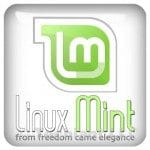As some of you will no doubt have noticed over the years, I am a die-hard Macintosh fan. I have run Windows desktops and servers, as well as Linux desktops and servers over the years, but my true love has always been the Apple Macintosh computers. So it is with some trepidation that I have faced the situation that I no longer have any Macintosh computers of my own.
While the situation was not anticipated, I have faced it head on and am rapidly on my way to filling all my computing needs with the Linux desktop that I have. This is the first of several posts where I will document that process and the solutions that I have come up with to achieve the same goals in my personal computing experience with Linux that I did with the Mac.
Chapter 1 – Choosing a distribution
As a long time Linux user, dating all the way back to running a specialized distribution of RedHat on the 486 PC card in my PowerPC 6100 like some other folks, I am well acquainted with the passionate arguments that can arise among Linux aficionado when the topic of choosing a distribution arises.
In the beginning many of the arguments centered around the needs of various kernel configurations and packaging systems. Do you compile your kernel by hand? Do you go modular or monolithic? Is RPM a better choice than deb? Do you go hard core and start a stage 1 Gentoo install where you have to bootstrap the kernel just to compile and install?
Some of these decisions will be familiar to you and some won’t be. Many of the old arguments don’t apply anymore due to major improvements over the years. Ofttimes the new arguments center around free vs. non-free, Gnome 2 vs. Gnome 3, Gnome vs. KDE, etc.
With all of this in mind, I developed a rather simple set of criteria based on my personal experience with the philosophy Apple has espoused in it’s ad campaigns of “it just works.” Here’s the list I came up with:
- Community involvement
With any OS choice, it is very important that there be a large community of users, comprised of multiple skill levels, that can provide innovative solutions and workarounds for usability problems that can be encountered. - Multiple update tracks
While having a stable only release track makes sense for a production-level environment, as a tech-enthusiast and a geek it is great to have access to testing and unstable release tracks when you want to try something on the bleeding edge. - Robust driver support
It was important that recent hardware support be available. I don’t want to have to wait until a major point release to get something as important as a network card working. - Eye candy
Yes, I know that to a lot of die-hard UNIX guys, the concept of eye candy being a major bullet item for picking a distribution is nuts, but coming from the Macintosh environment, which is arguably one of the most visually appealing, it was important.
 After doing a large amount of research and testing numerous live cd’s, I settled on Linux Mint 13 with the Cinnamon desktop environment. Linux Mint is a Ubuntu-based distribution, which means it traces it’s genealogy back to the grand old distribution of Debian.
After doing a large amount of research and testing numerous live cd’s, I settled on Linux Mint 13 with the Cinnamon desktop environment. Linux Mint is a Ubuntu-based distribution, which means it traces it’s genealogy back to the grand old distribution of Debian.
Ubuntu is known for having a extremely active community base and it has become the distribution of choice for many hardware vendors outside of the server market that are looking to pull Linux users into their product lines.
Being a Ubuntu/Debian based distribution, there are lots of opportunities for bleeding edge development when you want to go there. For example, Oracle’s Java 7 Update 4 is available as a package through a PPA repo.
Also, since Linux Mint 13 is a Gnome 3-base with the sleek, modern looking Cinnamon environment on top, there is plenty of eye candy to go around.
References
- Fischba, S. (1997, June 06). Running linux on ppc/486 card?. Retrieved from http://www.linuxmisc.com/7-freebsd/2fd450d75fd55344.htm
- Lagna, G. (2010, April 23). Apple’s ad campaign, a brief history… Retrieved from http://www.macgasm.net/2010/04/23/apples-ad-campaign-a-brief-history/
- Linux Mint – from freedom came elegance. Ubuntu-based Linux distribution. http://www.linuxmint.com/
- Cinnamon – Love your Linux, Feel at Home, Get things Done! Window manager for Linux. http://cinnamon.linuxmint.com/
- Andrei, A. (2012, January 17). Install oracle java 7 in ubuntu via ppa repository. Retrieved from http://www.webupd8.org/2012/01/install-oracle-java-jdk-7-in-ubuntu-via.html